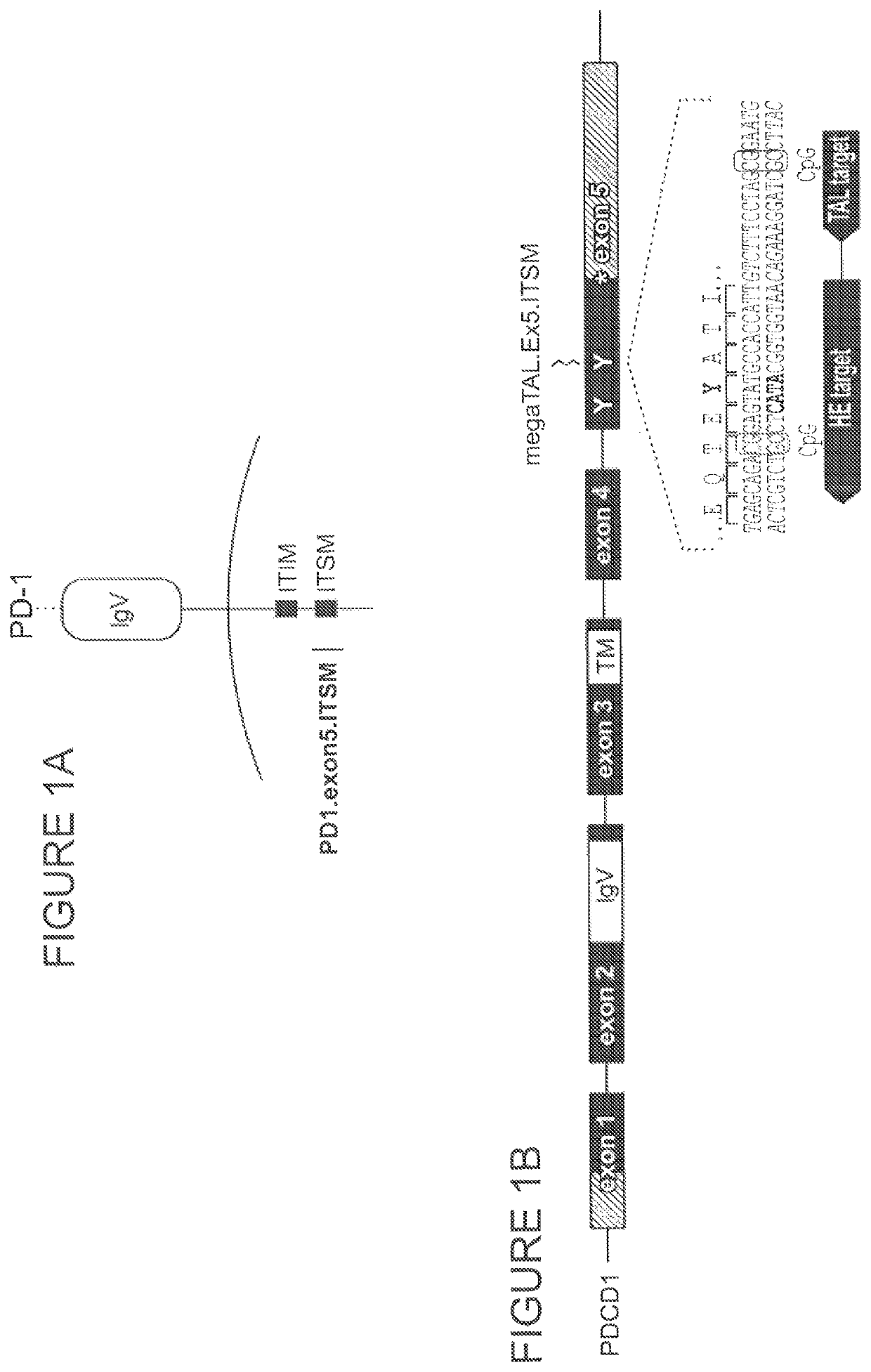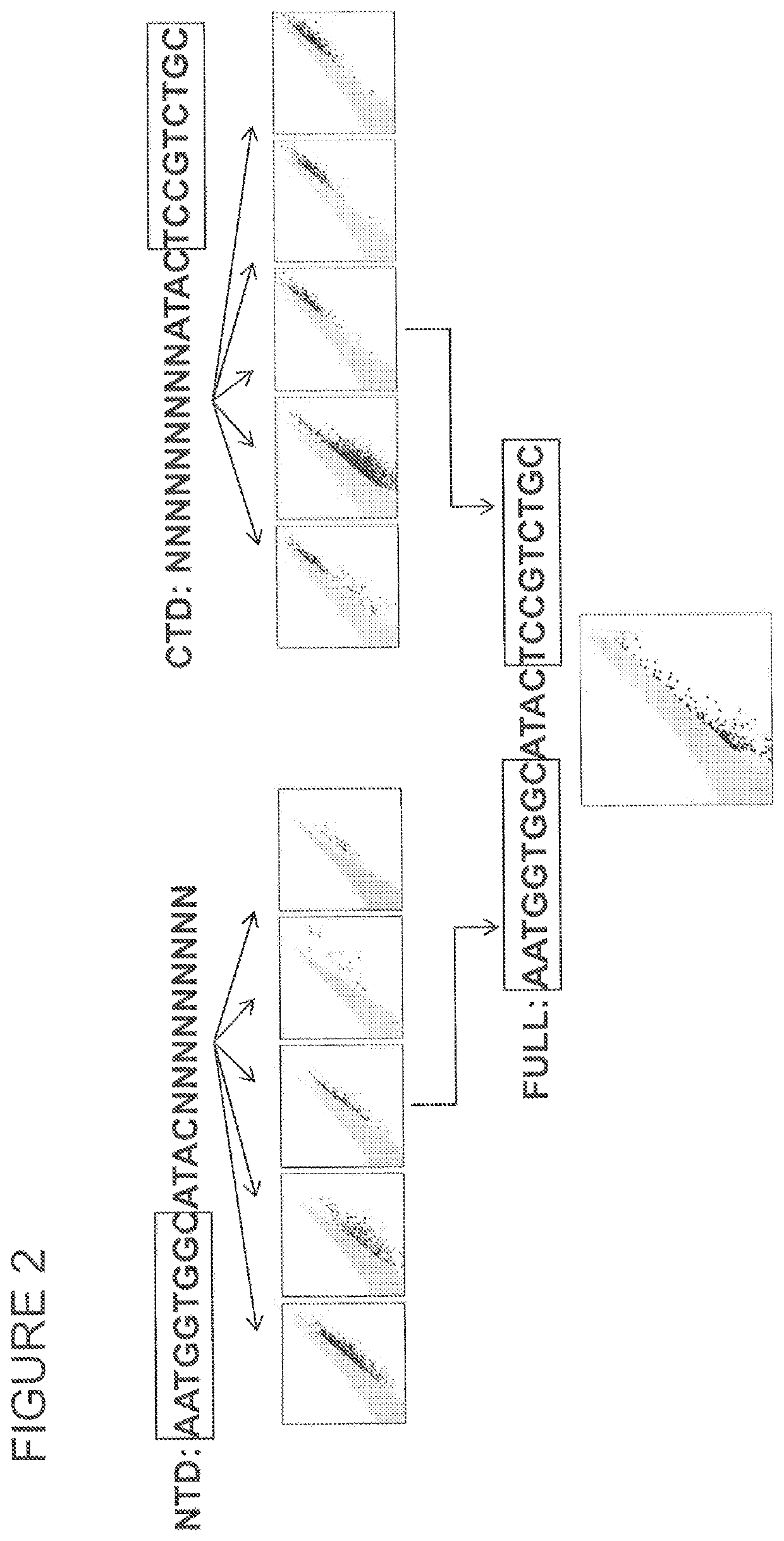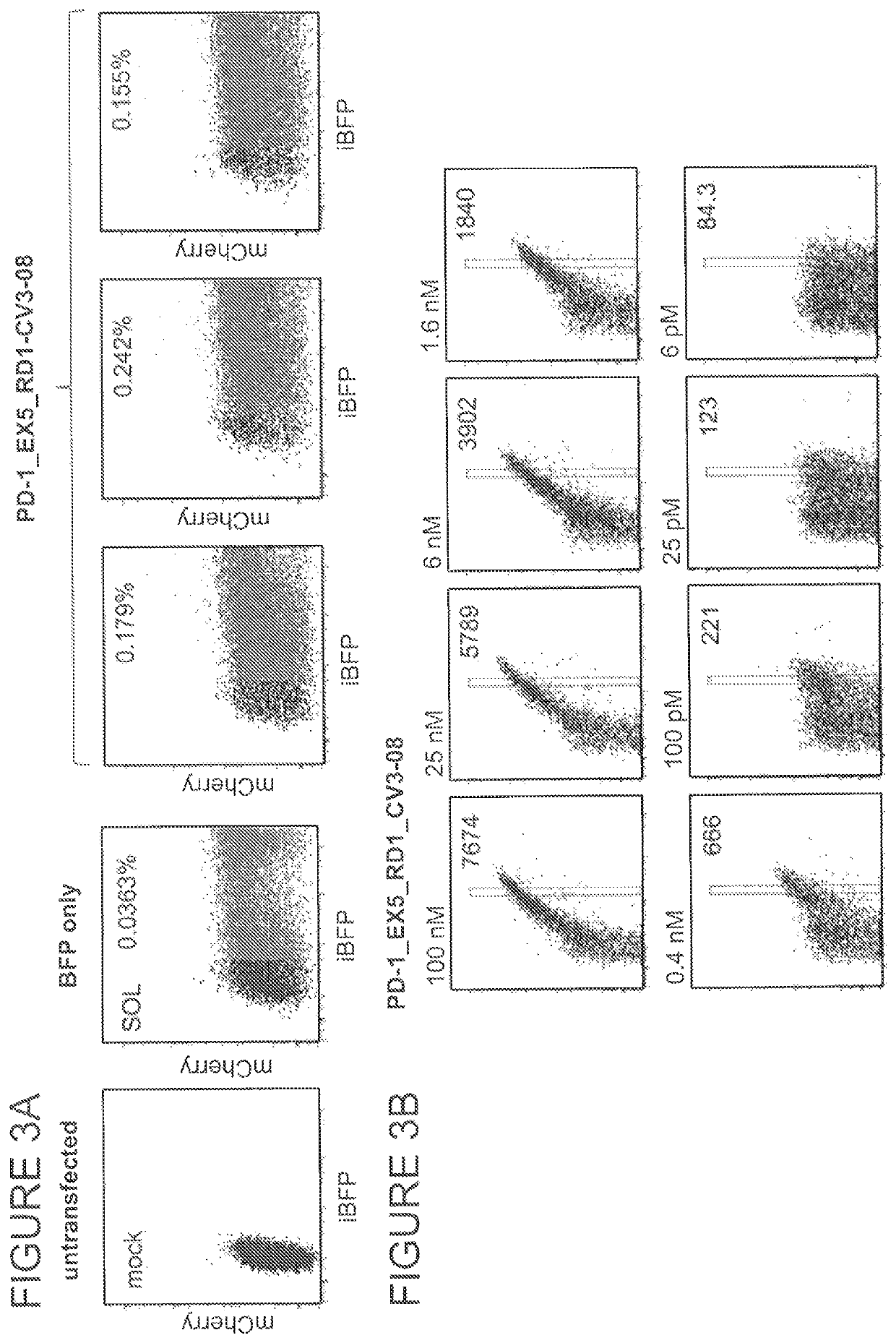PD-1 homing endonuclease variants, compositions, and methods of use
a technology of homing endonuclease and variants, applied in the field of genome editing compositions, can solve the problems of not having substantial overall success, sporadic cases of disease remission, and treatment is also associated with substantial toxicity
- Summary
- Abstract
- Description
- Claims
- Application Information
AI Technical Summary
Benefits of technology
Problems solved by technology
Method used
Image
Examples
example 1
Reprogramming I-OnuI to Disrupt the Intracellular Signaling Motif within the Programmed Death Receptor-1 (PD-1) Gene
[0822]PD-1 is expressed on the T cell plasma membrane following antigen receptor stimulation and activation. PD-1 comprises a signal peptide, an extracellular IgV-like domain, a transmembrane spanning domain, and an intracellular tail that contains both an immunoreceptor tyrosine-based inhibition motif (ITIM, consensus sequence S / I / V / LxYxxI / V / L) and an immunoreceptor tyrosine-based switch motif (ITSM, consensus sequence TxYxxV / I). FIG. 1A. The tyrosine at amino acid position 248 within the PD-1 ITSM becomes phosphorylated upon PD-L1 / 2 ligand binding concomitant with T cell activation, establishing a binding substrate for the SH2 domain-containing protein tyrosine phosphatase-2 (SHP2, see Chemnitz J M et. al. J Immunol. 2004 Jul. 15; 173(2):945-54.). The recruitment of SHP2 to the plasma membrane counteracts phospho-tyrosine driven activation signals in T cells (Yokosuk...
example 2
Characterization of an I-OnuI Variant and a MegaTAL Targeting PD-1 Exon 5
[0828]The PD-1 exon 5 target site comprises CpG dinucleotide motifs in both the meganuclease binding site and adjacent TAL array binding site (FIG. 1B). Methylation status of these dinucleotides was evaluated by bisulfite sequencing in primary human T cells activated with CD3 and CD28 and cultured in complete media supplemented with IL-2. After 3 days, genomic DNA was isolated and treated with bisulfite to convert any unmethylated cytosine bases to uracil. The exon 5 target site was then sequenced to reveal unmethylated (converted to Thymine) versus methylated (remained Cytosine) status of each cytosine. The results show that both of the CpG motif cytosines in the target site were predominantly methylated (FIG. 5), consistent with typical ‘gene body’ methylation patterns.
[0829]To confirm that the PD-1.ITSM.ex5_RD5_CV23MK HE variant recognized and cleaved the methylated exon 5 target site, DNA binding affinity a...
example 3
Reprogramming I-OnuI Meganuclease Domains to Disrupt the Extracellular Domains within the Programmed Death Receptor-1 (PD-1) Gene
[0833]The central-4 specificity of an I-OnuI variant HE that targets the PD-1 exon 5 target site (SEQ ID NO: 25) was profiled using high throughput yeast surface display in vitro endonuclease assays (Jarjour, West-Foyle et al., 2009). A plasmid encoding an HE variant that targets PD-1 exon 5 was transformed into S. cerevisiae for surface display, then tested for cleavage activity against PCR-generated double-stranded DNA substrates comprising the PD-1 exon 5 target site DNA sequence that contains each of the 256 possible central-4 sequences. The specificity profile showed that this reprogrammed I-OnuI is highly selective for central-4 target targets sites (FIG. 8), but can also cleave additional non-canonical central-4 target sites. Since there are very few canonical I-OnuI central-4 target sites located elsewhere in the PD-1 gene, non-canonical central-4 ...
PUM
 Login to View More
Login to View More Abstract
Description
Claims
Application Information
 Login to View More
Login to View More - R&D
- Intellectual Property
- Life Sciences
- Materials
- Tech Scout
- Unparalleled Data Quality
- Higher Quality Content
- 60% Fewer Hallucinations
Browse by: Latest US Patents, China's latest patents, Technical Efficacy Thesaurus, Application Domain, Technology Topic, Popular Technical Reports.
© 2025 PatSnap. All rights reserved.Legal|Privacy policy|Modern Slavery Act Transparency Statement|Sitemap|About US| Contact US: help@patsnap.com



